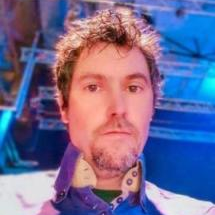Citizen Science Projects for Environmental Challenges and Sustainable Development Goals
A special issue of Sustainability (ISSN 2071-1050). This special issue belongs to the section "Environmental Sustainability and Applications".
Deadline for manuscript submissions: closed (31 December 2021) | Viewed by 28448
Special Issue Editors
Interests: citizen science, environmental science, artificial intelligence
Interests: SDGs; SDG monitoring; environmental monitoring; data revolution; citizen science
Interests: SDGs; big data; data revolution; trade; gender; regional statistics; input-output
Special Issue Information
Dear Colleagues,
Humans are destabilising the global biosphere on multiple fronts. They are taking more and more resources out of the environment while pumping back into it enormous quantities of waste and poison, thereby changing the composition of the soil, the water, and the atmosphere. They are hardly even aware of the myriad ways in which they disrupt the delicate ecological balance that has been shaped over millions of years. Consider, for example, the use of phosphorus as a fertiliser. In small quantities, it is an essential nutrient for the growth of plants. However, in excessive amounts, it causes eutrophication. Modern industrial farming is based on artificially fertilising fields with plenty of phosphorus. The high-phosphorus runoff from the farms subsequently negatively impacts rivers, lakes, and oceans, with a devastating impact on marine life. A farmer growing corn in Iowa might thus inadvertently kill fish in the Gulf of Mexico. As a result of such activities, habitats are degraded, animals and plants are becoming extinct, and entire ecosystems such as the Australian Great Barrier Reef and the Amazon rainforest might be destroyed.
Citizen science has proven to be a cost-effective method to characterise changes in local environments. Based on the collaborative effort between scientists, agencies, and the general public, citizen science can fill some information gaps, providing sustainable solutions to environmental challenges. Citizen science offers the further benefit of improving the participation and understanding of local populations in managing their local environment.
The main aim of this Special Issue is to bring together studies and projects to develop and provide the means for implementing solutions to measure progress in improving environmental quality with Sustainable Development Goals (SDG) indicators, based on citizen science and involving low-income population groups, in any part of the world. Achieving the SDGs is underpinned by monitoring and reporting 169 targets through 231 unique indicators, in an evolving framework, which are used for tracking progress. To date, monitoring SDGs remains reliant mainly on traditional sources of data (i.e., censuses, surveys, administrative records), yet this could benefit from the integration of new and complementary data streams, including from citizen science and community-based monitoring (Fraisl et al., 2020; Fritz et al., 2019). The projects need to maximise the impact of citizen science monitoring by involving as many players as possible, and especially low-income communities, especially in the Global South. The projects can, for example, evaluate and test citizen science tools, methods, and technologies that measure parameters that are identified as locally and nationally relevant in various topics such as good ambient water quality, marine litter, biodiversity, and air pollution, among others. The projects should enable the involvement of as many players as possible currently using citizen science to, for example, monitor environmental quality and lead to better monitoring of SDG indicators. Projects can highlight their strong links with citizen science networking organisations in Australia, the US, Europe, Asia, Africa, and Latin America, or organisations such as the World Water Quality Alliance. Available organisations to deploy the citizen science solutions should be mentioned.
The editors encourage submissions that explore citizen science projects which contribute to solving the environmental challenges related to the sustainable development goals. Examples of projects and applications of citizen science in any domain and related to any SDG are welcomed.
References
- Fraisl, D., Campbell, J., See, L., Wehn, U., ….Fritz, S. (2020) Mapping citizen science contributions to the UN Sustainable Development Goals, Science of the Total Environment.
- Fritz, S., See, L., Carlson, T., Haklay, M., ... West, S., (2019) Citizen Science and the United Nations Sustainable Development Goals, Nature Sustainability, October 2019, 922-930.
Dr. Luigi Ceccaroni
Ms. Dilek Fraisl
Dr. Stephen MacFeely
Mr. Stephen Parkinson
Guest Editors
Manuscript Submission Information
Manuscripts should be submitted online at www.mdpi.com by registering and logging in to this website. Once you are registered, click here to go to the submission form. Manuscripts can be submitted until the deadline. All submissions that pass pre-check are peer-reviewed. Accepted papers will be published continuously in the journal (as soon as accepted) and will be listed together on the special issue website. Research articles, review articles as well as short communications are invited. For planned papers, a title and short abstract (about 100 words) can be sent to the Editorial Office for announcement on this website.
Submitted manuscripts should not have been published previously, nor be under consideration for publication elsewhere (except conference proceedings papers). All manuscripts are thoroughly refereed through a single-blind peer-review process. A guide for authors and other relevant information for submission of manuscripts is available on the Instructions for Authors page. Sustainability is an international peer-reviewed open access semimonthly journal published by MDPI.
Please visit the Instructions for Authors page before submitting a manuscript. The Article Processing Charge (APC) for publication in this open access journal is 2400 CHF (Swiss Francs). Submitted papers should be well formatted and use good English. Authors may use MDPI's English editing service prior to publication or during author revisions.
Keywords
- participatory/participation
- citizen science
- environmental management
- SDG monitoring
- data quality
- capacity development
- impact assessment
- costs
- benefits
- interoperability
- standardisation
- innovation








